

| Interfaces > Applications > Package Wizard |
The Package Wizard in SoftwareCentral is used to import packages into the SCCM. The wizard is found under “Applications/Package Wizard”.
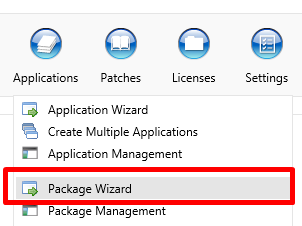
It is a simple wizard in 3 steps that will automatically create the package, the collections, deploy the package to those collections and distribute it to the selected distribution points.
The first page and step is the “Template” step. Select a template if you want to use some predefined settings or click the “Next” button if you want to use the default settings.
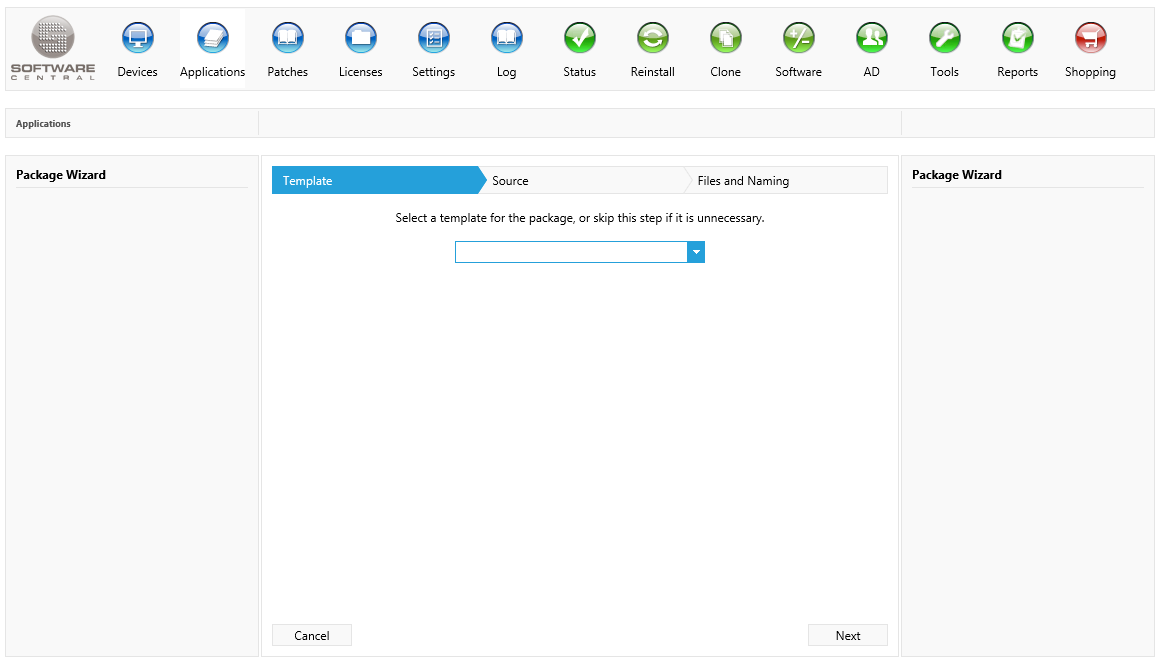
In step 2 you must select the folder where the package’s root files are. If the files are not present on the share yet, you can upload them directly in the file explorer.
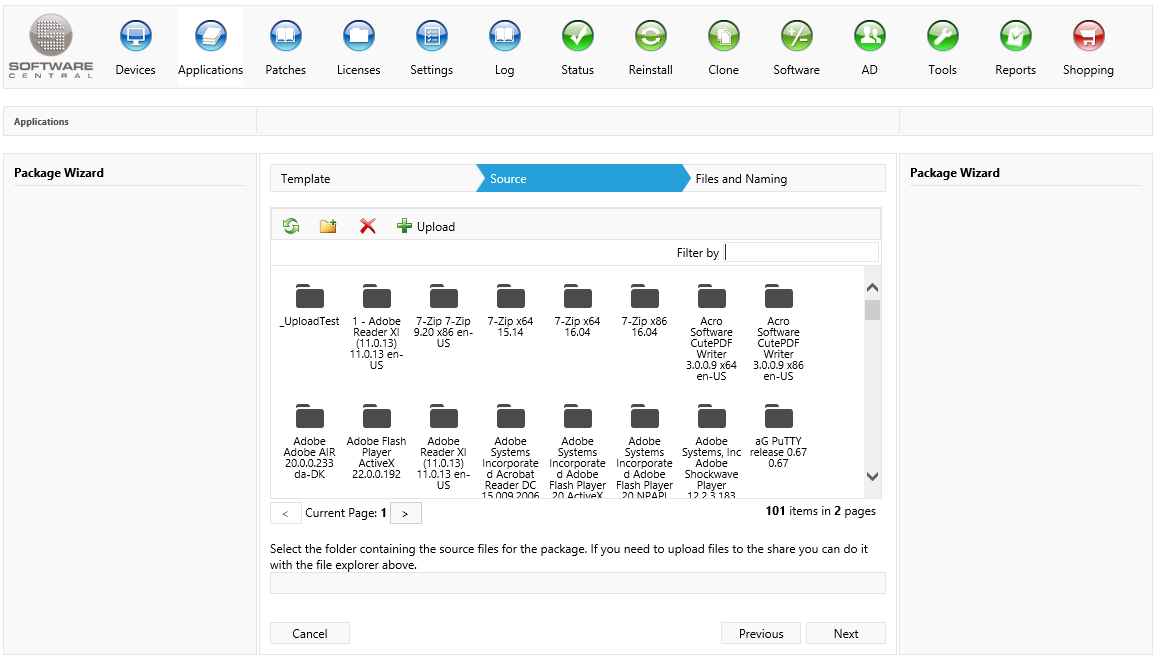
1. Use the refresh button to refresh the current view - if you for instance have added a new folder using Windows Explorer.
2. Create a new folder.
3. Delete a file or folder.
4. Upload one or more files. The maximum file size allowed is 1 GB. If you upload a zip file, it will automatically get extracted.
5. Search for files and folders in the folder.
6. Only 100 files or folders can be displayed at once. Use the pager to change page or search for the item you are looking for.
7. The path to the selected root folder will be written in this textbox. A folder is selected when it is highlighted or opened.
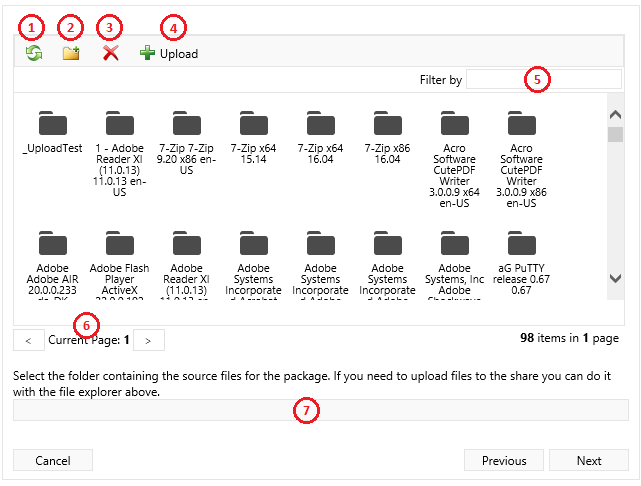
In step 3 you must select the files used to install the application and name the application.
SoftwareCentral will automatically try to detect the files and the name. If you wish to discard the autosuggestions, click on the "Discard Auto Suggestions" button.
If you wish to read the name from msi file in the source folder, you can click on the "Read name from MSI" button. This will open a new window where you can select which msi the name should be read from.
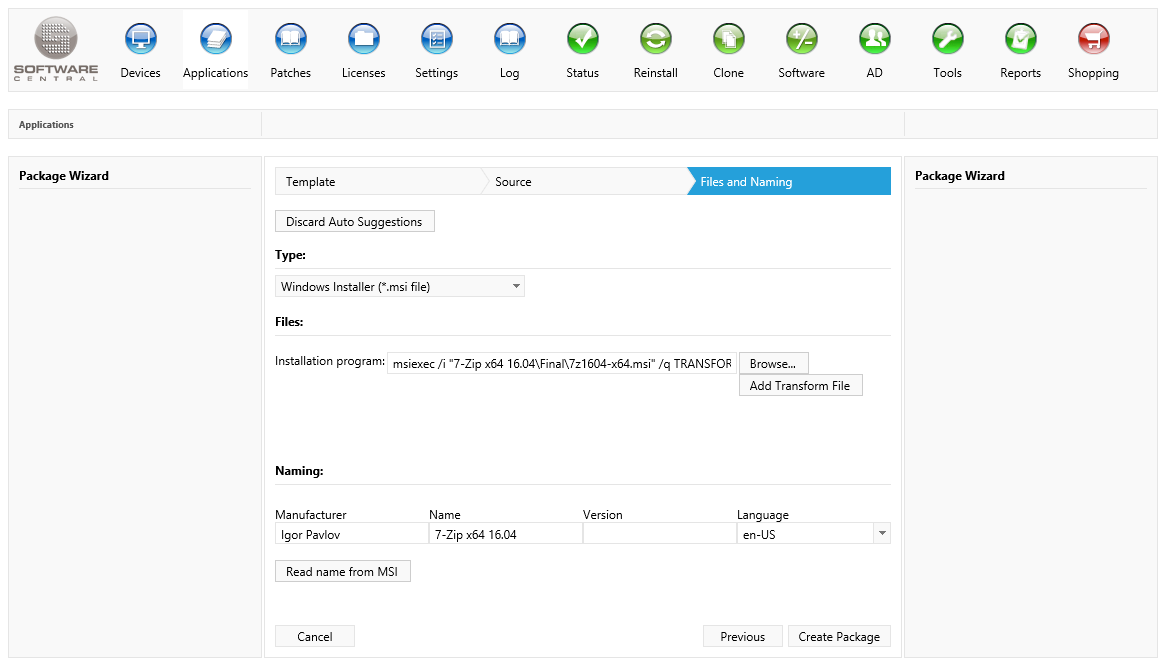
Once files and name are filled in, the package is ready for creation. Click on the "Create Package" button to create the package.
To verify that the package has been created, you can use the Log in SoftwareCentral or the notifications popup.
If nothing is marked as an error with the![]() -icon in the log, the package has been created successfully.
-icon in the log, the package has been created successfully.